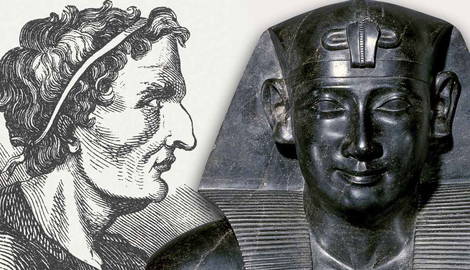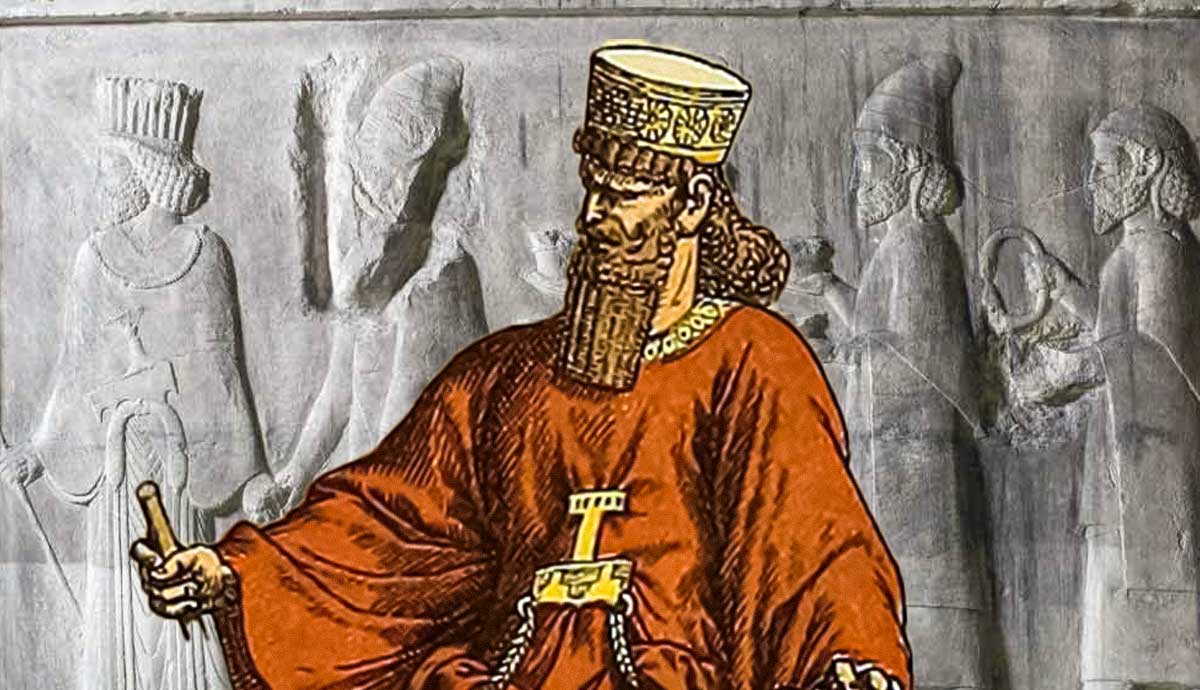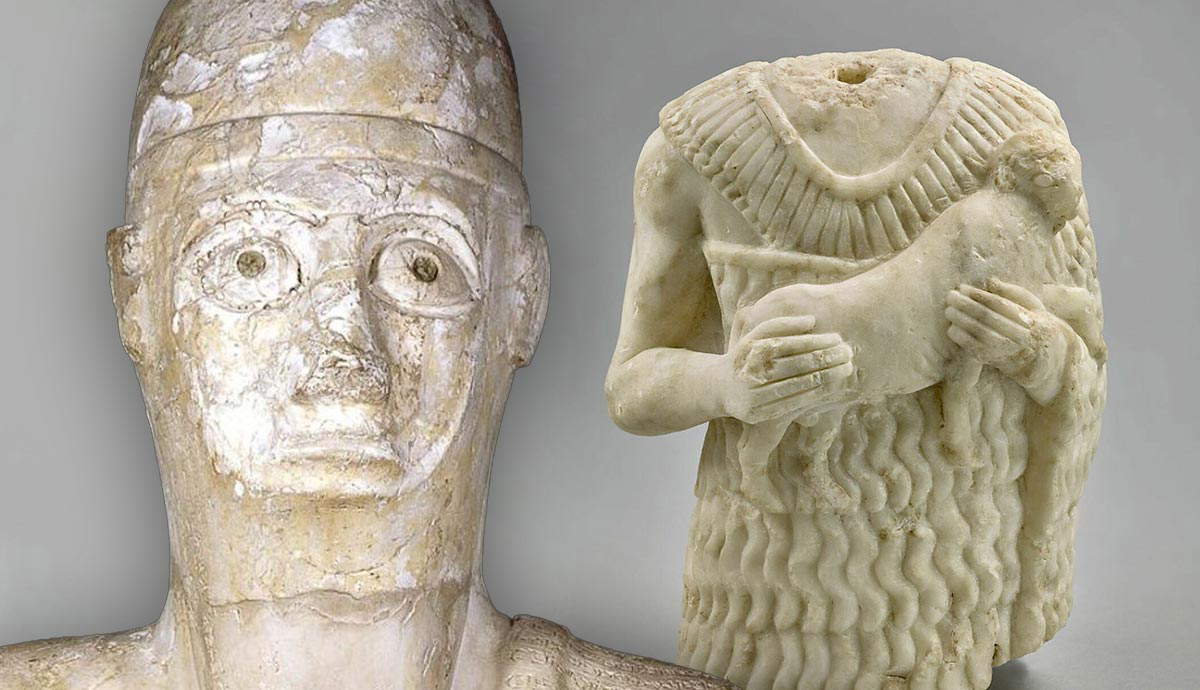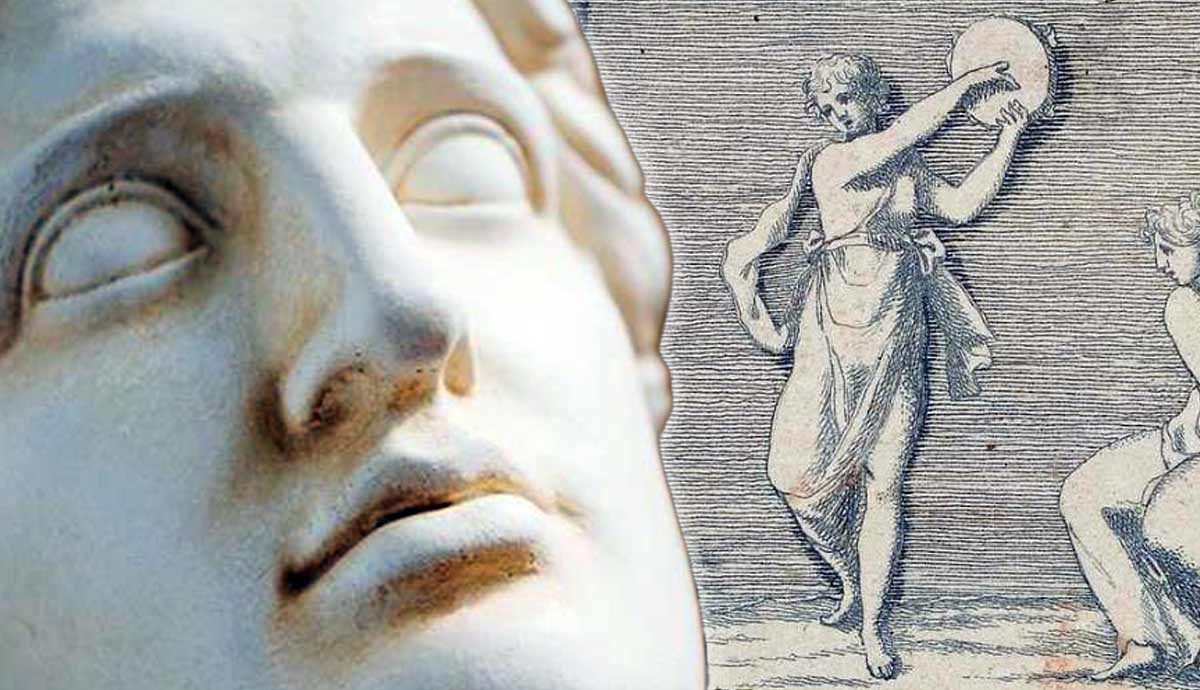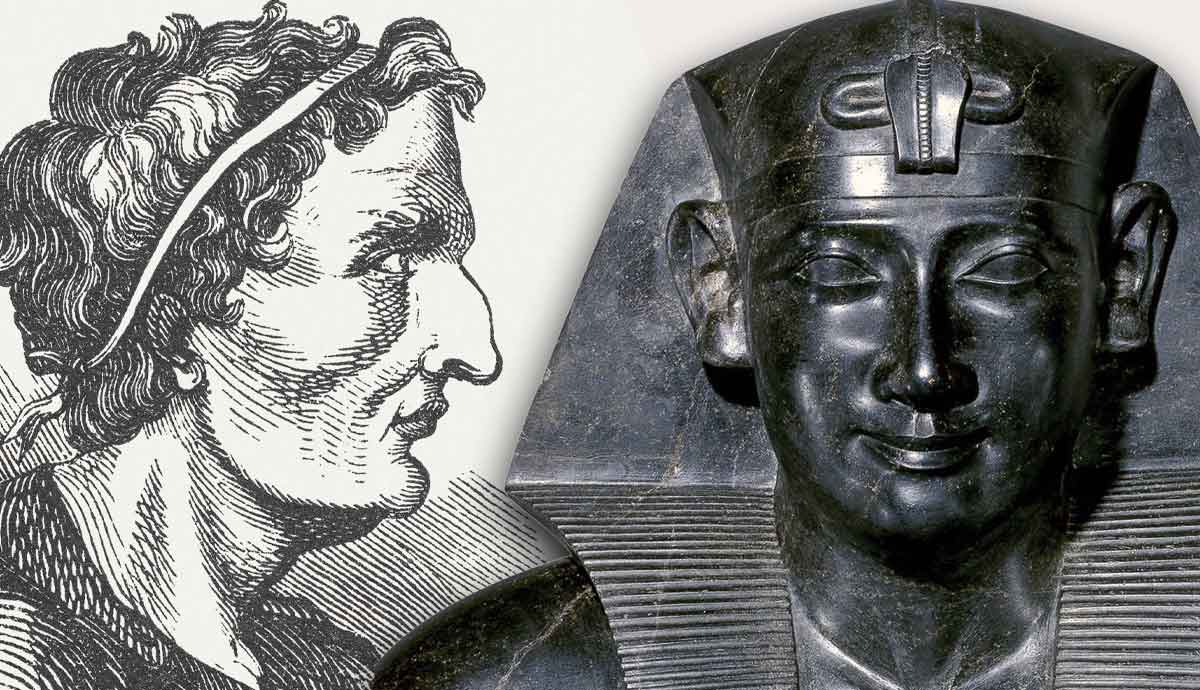
Ancient Egypt and Ancient Greece were two of the greatest civilizations of the Mediterranean world. They were brought closer together when the Macedonian king Alexander the Great established his grand empire across the Greek-speaking world and the Near East, including conquering Egypt, which he liberated from Persian rule in 332 BCE. When he died unexpectedly, less than ten years later, his generals fought among themselves for possession of the different parts of his empire. A general named Ptolemy, son of Lagus, took control of Egypt in 305 BCE and established a Greek-Macedonian ruling dynasty known as the Ptolemaic dynasty. Ptolemy immediately built a new capital in Egypt, Alexandria, and introduced new traditions to the old land while also upholding many elements of pharaonic culture. Ptolemy’s precedent was followed by his successors until the Roman general Octavian, better known as Augustus, conquered Egypt in 30 BCE.
Egyptian-Greek Relations

Long before Ptolemy ruled in Egypt, the Greeks and Egyptians had a deep history of peaceful relations. Archaeological evidence shows that the Egyptians and Minoans traded and probably had diplomatic contacts with each other as early as the Middle Kingdom (c. 2055-1650 BCE). Later, in the early New Kingdom (c. 1555-1186 BCE), the Egyptians were in contact with the Mycenaeans. A relief in the tomb of Menkheperraseneb at Thebes depicts Aegean people bringing tribute, including linen and a bull’s head vessel, referred to by the Egyptian word “Keftiu.” Egyptologists believe the word refers to Minoans and Mycenaeans collectively. Egyptian interactions with classical Greece began in the 26th or “Saite” dynasty (664-525 BCE).
The first Saite king, Psamtek I (ruled 664-610 BCE), hired Greek mercenaries to augment his military. Greek merchants also began relocating to Egypt in great numbers at this time, eventually establishing a Greek quarter in the capital city of Memphis. According to Herodotus, Book II.178, the Saite king, Amasis (reigned 570-526 BCE), allotted Greeks the coastal city of Naucratis and a monopoly on sea trade. Later, the Athenians helped the Egyptians expel the Persians, allowing them to install the native Egyptian king, Amyrtaios (ruled 404-399 BCE).

The Achaemenid Persians reconquered Egypt in 343 BCE but were then vanquished for a final time by Alexander of Macedon (reigned 336-323 BCE) in 332 BCE. By the time of Alexander’s conquest, the Egyptians and Greeks were well acquainted with each other. Ironically, both ancient cultures traditionally took a more dim view of other cultures, but in this case, there appears to have been a level of mutual respect. Alexander was proclaimed the son of the god Amun by the oracle of Siwa. The Macedonian king then traveled to Memphis, where he was crowned as the next neesu (king/pharaoh) of Egypt.
The Diadochi and Egypt

When Alexander died in 323 BCE, his generals, who became known as the Diadochi, divided his empire among themselves. The generals met in Triparadeisos, Syria, in 320, but there was one minor problem: Alexander’s son, Alexander IV. The Diadochi had little respect for Alexander IV, whose mother was the Bactrian princess, Roxanna. With that said, the Diadochi kept up appearances to a certain extent, publicly accepting their subordinate status while engaging in three major wars against each other. This all changed when Alexander IV was assassinated by the Diadochi Cassander in 310 or 309 BCE.
When the smoke cleared, the eastern Mediterranean and Near East were divided into several kingdoms, with those of Antigonus, Seleucus, and Ptolemy being the most important. Antigonus was ruler of most of Greece, Seleucus was given Mesopotamia, and Ptolemy acquired the wealthiest of the kingdoms, Egypt. Before Ptolemy officially assumed the throne in 305 BCE and became Ptolemy “Soter” or “savior,” he had to defeat one final enemy.

According to the 1st century BCE Greek historian and geographer, Strabo, Ptolemy defeated the Diadochi Perdiccas, at least in part, by taking control of Alexander the Great’s body.
“The Sema also, as it is called, is part of the royal palaces. This was the enclosure which contained the burial-places of the kings and that of Alexander; for Ptolemy, the son of Lagus, forestalled Perdiccas by taking the body away from him when he was bringing it down from Babylon and was turning aside towards Aegypt, moved by great and a desire to make that country his won. Furthermore, Perdiccas lost his life, having been slain by his soldiers at the time when Ptolemy attacked him and hemmed him up in a desert island.” (Geography, XVII.48ff.)
Building Alexandria

After defeating his enemies on the battlefield, Ptolemy concentrated on solidifying his legacy through a number of ambitious construction and social programs. Alexander founded his eponymously named city in 331 BCE, but it was Ptolemy I who made it a world-class capital. In addition to the palace, Alexandria became known for its Lighthouse, which was one of the Seven Wonders of the Ancient World, and its Library and Museum. Although Ptolemy I’s son and successor, Ptolemy II, is generally given credit for the construction of these buildings, many scholars believe that the idea was Ptolemy I’s. Alexandria quickly became a trade and cultural center.
Another notable construction project that Ptolemy I probably started, which his son finished, was a canal that linked the Nile River to the Red Sea. The earliest canal that connected the Nile River to the Red Sea was probably completed during the reign of Senusret III (c. 1870-1831 BCE). Later canal builders likely used Senusret’s as a template. A canal was later built by the Achaemenid Persian king, Darius I (521-486 BCE). According to Strabo and the 1st century BCE Greek historian Diodorus, the “Ptolemaic kings” later recut the canal to connect the Nile to the coastal city of Arsinoe.
Building a New Culture

Ptolemy and many of the other Diadochi were ardent believers in the idea of Hellenism. Hellenism is a broad term that has been defined variously, but is generally viewed as the spread of Greek culture to the East. As Ptolemy and the other Macedonian generals took control of ancient Near Eastern cultures, they imported Greek religion, philosophy, politics, and Greek-speaking peoples to those lands. But as the Greeks were influencing those ancient cultures, Greek culture was also influenced, creating new hybrid cultures.
When Ptolemy became both the Egyptian pharaoh and the Greek king of Egypt, he immediately enacted a program of Hellenization that created a new culture. Ptolemy I opened the doors for Greek speakers from around the Hellenistic world to settle in the new city of Alexandria and throughout Egypt. Within the first 100 years of Ptolemaic rule, Alexandria was more ethnically Greek than Egyptian. Then, in the middle of the 2nd century BCE, many Jews immigrated to Alexandria, making it a true multicultural city. Despite its ethnic diversity, the Alexandria of the Ptolemies was divided into distinct ethnic districts: Greek, Egyptian, and Jewish.

The mosaic of people in Ptolemy’s new kingdom presented a number of challenges. Each group followed its own laws and had its own ideas about citizenship. Ptolemy generally followed traditional Greek models of citizenship in the predominantly Greek cities, based on tribes and local units, or demes. This system gave preference to Greek speakers. On the other hand, criminal and civil laws were often applied to the ethnic group of those in question. The Greeks were, for the most part, unable to penetrate the powerful Egyptian priesthoods, so Ptolemy I established a hybrid cult.
Ptolemy’s idea was to merge the cult of the primary Greek god, Zeus, with the popular Egyptian animal cult of the Apis bull. The Apis bull was viewed as the living incarnation of Osiris, the god of the dead, and its worship became popular in the Late Period (664-332 BCE). In order to pull this feat off, Ptolemy would need the help of a Hellenized Egyptian priest.
The Egyptian priest Manetho is today best known for his history of Egypt, which was written in the 3rd century BCE. Although Manetho’s work only survives in fragments from later writers, it was the first history that divided Egypt into dynasties, later becoming the standard among Egyptologists.

But before Manetho wrote his history of Egypt, he helped Ptolemy I create the cult of Serapis. Unlike the Apis cult, which was located in Memphis and whose worship was focused on an actual bull, the primary temple of Serapis was in Alexandria. There was no bull associated with the Serapis, but instead, Serapis was depicted as a human-like anthropomorphic figure, a divine form considered acceptable in Greek religion.
One final, interesting Hellenistic innovation that Ptolemy I introduced to Egypt was a celebration known as the “Ptolemaieia.” In the style of many Greek festivals, it was held every four years in Alexandria in honor of Ptolemy I. Games and athletes were imported from around the Greek world, but perhaps the most unique aspect of it was the parades. The highlight of the parades was a mechanical float that carried a 13-foot-high statue that poured milk from a golden vessel. Other mechanical wonders were documented in the parades along with musicians and people dressed as satyrs. The Ptolemaieia was a strictly Greek affair, but as Ptolemy ruled, he was keen to recognize native Egyptian concepts of kingship.
Preserving Egyptian Kingship

Although Ptolemy and his successors championed Hellenic virtues and Greek culture, they were Macedonian and therefore quite fine with an absolute monarchy style of government. Yet Ptolemy soon learned that it was no easy task to be a Macedonian-Greek king and an Egyptian king at the same time. The ethnic Greeks who migrated to Egypt were his first constituency, although he also had to keep the native Egyptians happy, or at least placated.
In order to do this, Ptolemy carried out a two-part program. On the one hand, Ptolemy protected and even patronized the native cults. For example, despite devising the Serapis cult, Ptolemy continued to patronize the Apis cult in Memphis. Ptolemy I also had temples to native Egyptian gods built. These include the addition of the Horus temple in Tanis, the construction of a new temple for Sobek in Tebtynis, and the first phase of a temple in Sharuna, among others. The later Ptolemaic rulers followed and expanded on Ptolemy I’s attitudes and ideas toward the native cults.

With that said, Ptolemy I also restricted the power of the Egyptian priests. Ptolemy no doubt viewed the immense economic power that the native priests held in Egypt as an obstacle to his absolute power. The religious cults owned large tracts of land and were largely responsible for the distribution of the food supply. Ptolemy simply directed many of the native priests’ prerogatives to the royal palace in Alexandria, thereby centralizing even more power.
Ptolemy I is often overlooked in terms of Ptolemaic rulers. His son and successor is credited with the greatest building projects of the dynasty, while Cleopatra’s name is known to nearly everyone in the world. Yet, it was Ptolemy I’s efforts to become king, create Alexandria, and meld Ptolemaic Egypt into a new culture that ensured success for the later Ptolemaic rulers.
